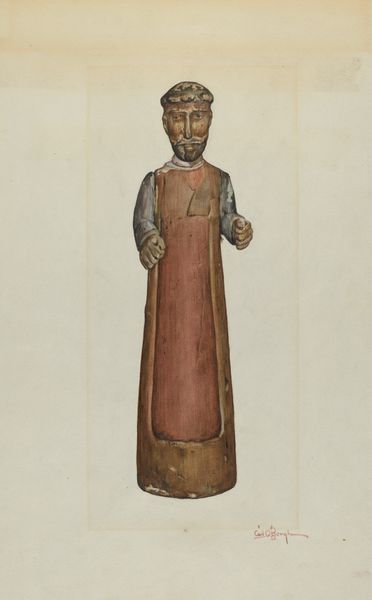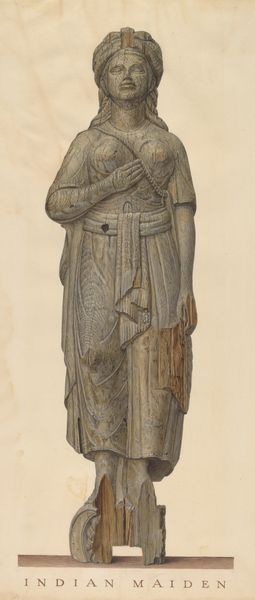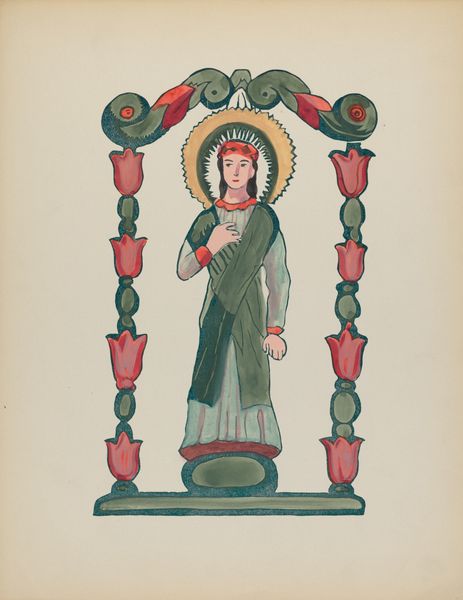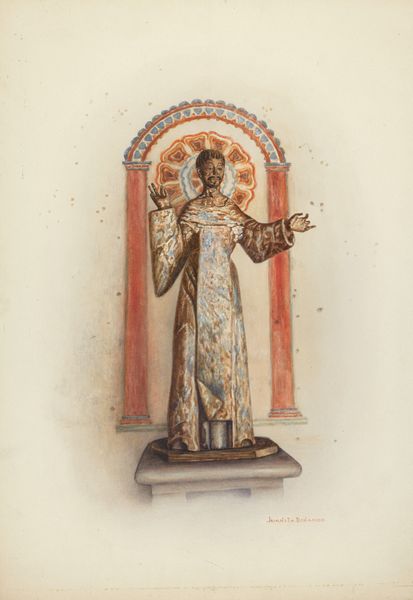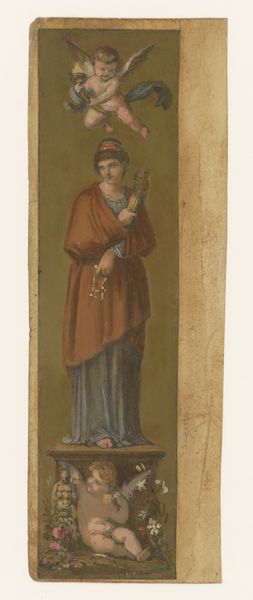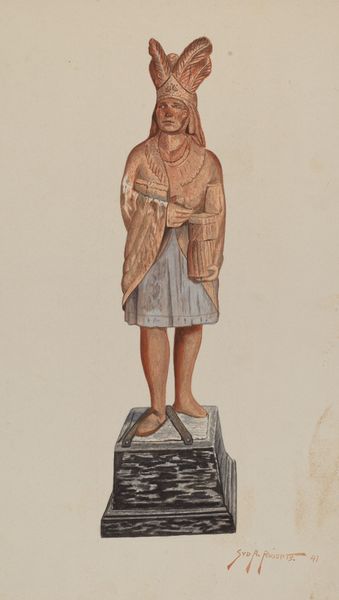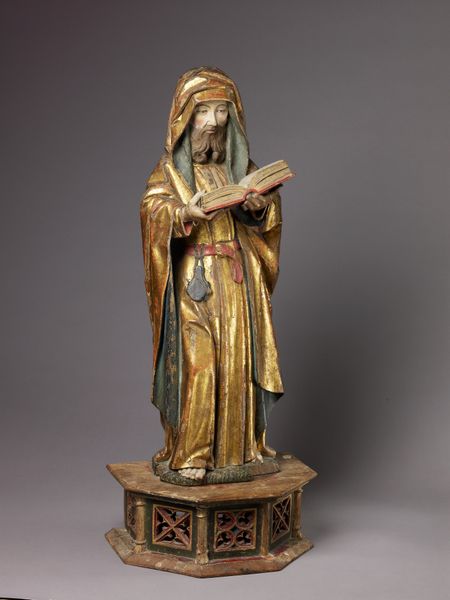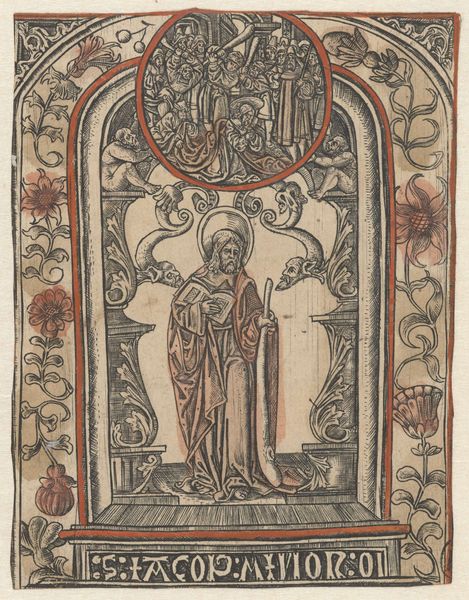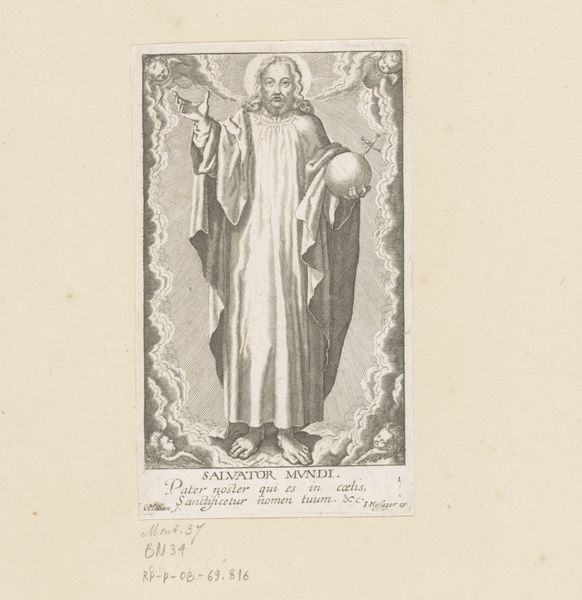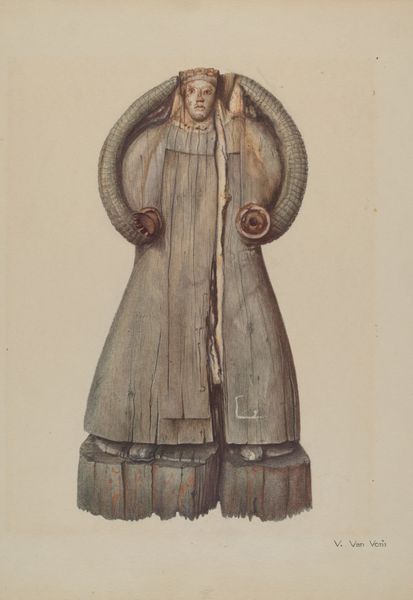
drawing, coloured-pencil, watercolor
#
portrait
#
drawing
#
coloured-pencil
#
water colours
#
indigenism
#
watercolor
#
coloured pencil
#
folk-art
#
watercolor
Dimensions: overall: 35.6 x 26.7 cm (14 x 10 1/2 in.) Original IAD Object: 19" long; 23" high; 5 1/2" wide
Copyright: National Gallery of Art: CC0 1.0
Editor: Here we have Robert Taylor's "Santo (St. Francis)," created around 1941 using watercolor and colored pencil. I’m struck by the seeming simplicity and yet also a powerful sense of dignity in the figure. How do you interpret this work within its historical context? Curator: This piece resonates with a fascinating dialogue between Indigenism and religious iconography. Given the period, the 1940s, it’s important to consider how artists were grappling with representing cultural identity and religious traditions. What does "Santo" mean in this context, and what does it mean in the context of Indigenous representation and how might these cultural lenses be working to critique power dynamics? Editor: So, beyond just being a religious figure, the way it's portrayed says something more about identity? Curator: Precisely. Notice the folk-art style; the materials like watercolor and coloured pencil speak to a specific artistic choice and cultural accessibility. This might reflect a conscious decision to connect with, and represent, a particular community or heritage. The use of "Indigenism" as style reflects a need to show the history of colonization in Americas. Considering what’s excluded can also illuminate this piece. Editor: That makes sense. The conscious artistic choice… So it's not just a portrait of St. Francis, but a statement? Curator: Absolutely! Think about the agency imbued within it, the claim over how culture is seen. The artist’s perspective is critical. Editor: This is amazing! I'm now understanding it’s far more complex than just a drawing of a religious figure. It really places it within specific histories. Curator: Indeed! Hopefully this framework can allow a viewer to now interrogate the context in an intersectional way!
Comments
No comments
Be the first to comment and join the conversation on the ultimate creative platform.
